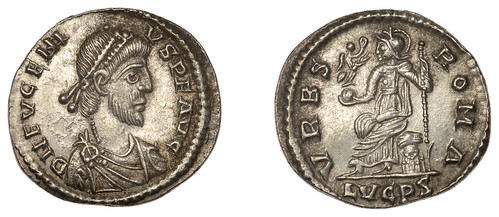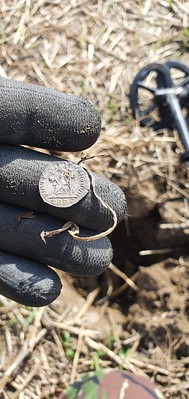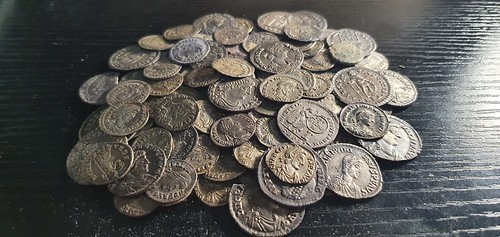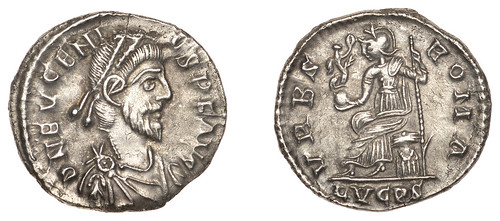
PREV ARTICLE
NEXT ARTICLE
FULL ISSUE
PREV FULL ISSUE
V25 2022 INDEX E-SYLUM ARCHIVE VALE OF PEWSEY HOARD OF ROMAN SILVER COINSThis Noonan's press release discusses the Vale of Pewsey hoard of Roman silver coins. -Editor It was over two days in September 2020, after the first Covid lockdown had finished, that three metal-detectorists with over 90 years detecting experience between them, came across a wonderful hoard of Roman silver coins in an extremely unusual way! The hoard of 142 coins which is expected to sell in the region of £30,000–40,000 will be offered for sale by specialist Coin, Medal, Banknote and Jewellery auctioneers Noonans (previously Dix Noonan Webb) in their frst sale under their shortened name on Tuesday, May 17, 2022 at their Mayfair saleroom (16 Bolton Street, London W1J 8BQ).
As Rob explained: This prompted both Mick and Dave to grab their detectors and help in the search. Over the course of the weekend they found 161 coins in total, comprising silver siliqua and miliarense dating from AD 340–402. They had to keep them in their camping washing-up bowl as they didn't have anything else to store them in.
Rob continued:
He finished: As Nigel Mills, Consultant (Artefacts and Antiquities) at Noonans explains:
He went on to say: The British Museum has studied the coins and is retaining just two coins for their collection from the hoard.
For more information, see:
Wayne Homren, Editor The Numismatic Bibliomania Society is a non-profit organization promoting numismatic literature. See our web site at coinbooks.org. To submit items for publication in The E-Sylum, write to the Editor at this address: whomren@gmail.com To subscribe go to: https://my.binhost.com/lists/listinfo/esylum All Rights Reserved. NBS Home Page Contact the NBS webmaster 
|




